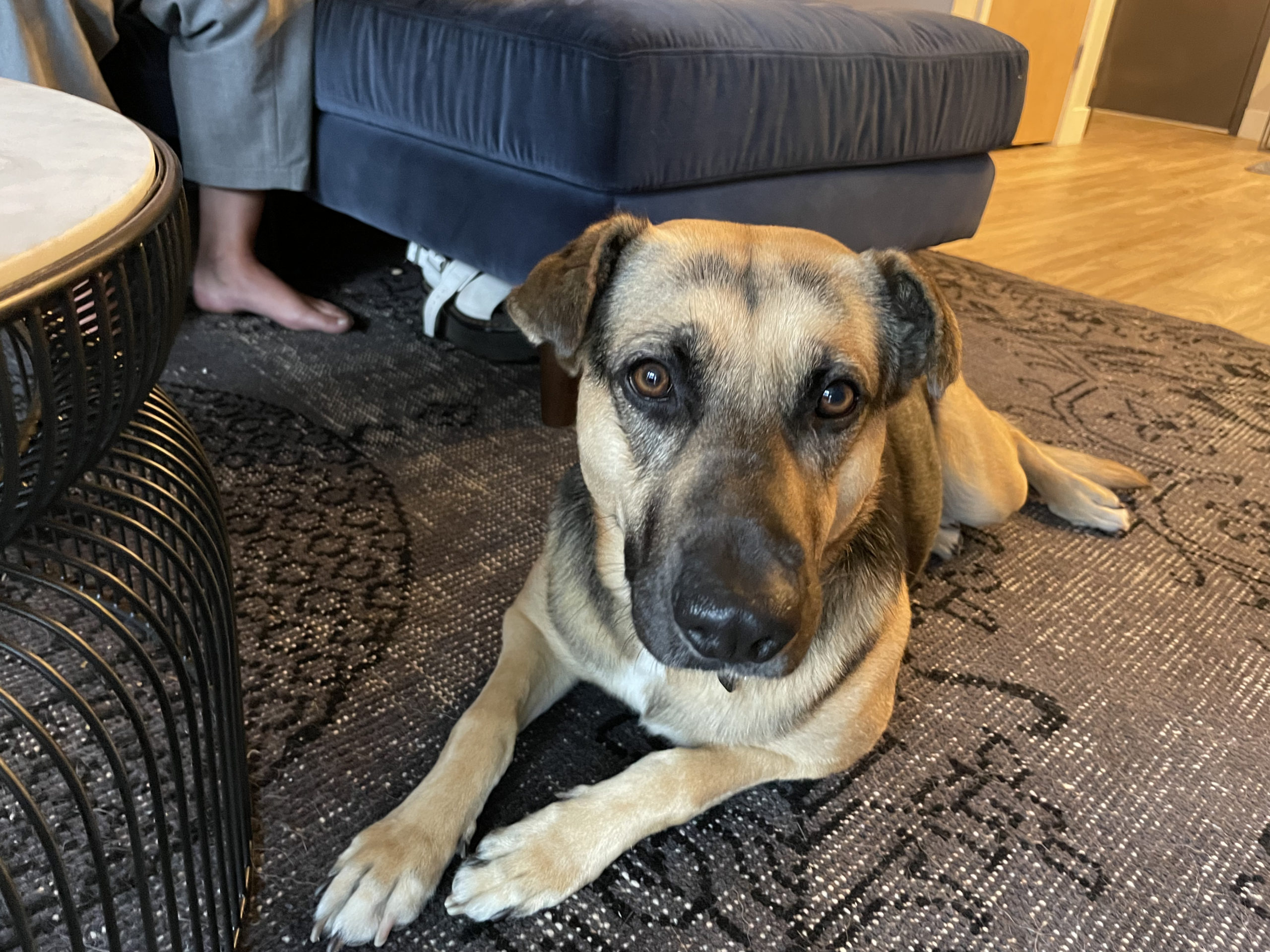Tips to Help a Marina del Rey Rescue Dog Get Over its Separation Anxiety
By: David Codr
Published Date: August 27, 2021
For this Marina del Rey dog behavior session we worked with Pootie, a 3 year-old rescue Shepherd mix who barks and reacts to strangers who visit her home and suffers from separation anxiety.
Knowing that Pootie was a little insecure around strangers, I had the guardians bring her out to meet me outside of the home. I left a treat trail for her to find and was sitting on the ground when she approached. This is a great way to meet dogs who are uncertain about strangers. Within seconds she was niffing me and eating treats from my hand.
As a Dog Behaviorist, I have found that setting a dog up for success can make a real big difference when you’re dealing with dog behavior problems. I would recommend that the guardians re-create this greeting method and go through their phones contacting friends they haven’t seen for a while to have them come by and practice this greeting. They should also practice the treat trail independent of having anyone at the end of it a few times too, just to make sure the dog sees it as a wonderful activity.
After sharing some dog behavior tips with the guardians, a handed one of them my camera so that I could film the secret method that I use to help dogs get over separation anxiety. I guess it’s not much of a secret when you share it in free positive dog training videos, but I digress. The wonderful thing about this trick to stopping separation anxiety in dogs is anyone can do it, even if you are not a professional rescue dog trainer.
If you have a dog that has developed separation anxiety due to Covid, you may want to check out the free positive dog training video below.
By desensitizing the dog from the triggers that are associated with the humans departure, helping the dog practice being somewhat alone and then leaving for progressively longer and longer periods of time, the guardians can help their dog practice being calm when left alone.
The key to the secret to helping dogs with separation anxiety is to go at the dog’s pace. You want to practice frequently in short sessions that are successful and end on a positive / successful note. If you push too far, and the dog gets anxious or nervous, that is the behavior that they are practicing. It’s better to go slow and steady than have to backtrack – although there’s nothing wrong with backing up a step or two. In fact, that is a pretty common part of this process to help dogs get over separation anxiety.
I also recommended that the guardians discuss the possibility of putting Pootie on fluoxetine, AKA doggy Prozac. Throughout the session she demonstrated that she had a high level of cortisol, the stress hormone, in her blood. While this is manifest, it’s going to make it much more difficult to help her get over her separation anxiety or fear of strangers. In many cases, medication is one of the key elements that can help the dog relax enough to start practicing desired behaviors.
I hope that these tips to stop separation anxiety in dogs can help Pootie learn to relax when she is alone. Fortunately for her, her guardians are pretty awesome and very dedicated towards her well-being. Although they are not professional dog trainers, they picked up on the exercises that we introduced in the session pretty quickly.
I asked the guardians to give me a call or text me if they run into any roadblocks or things start progressing the way we hope they will. Helping a dog get over separation anxiety is a process that has its ups and downs. I always make sure to tell the clients that I am there for them and to expect ebbs and flows.
To help the guardians remember all of the other dog behavior tips I shared in this in-home Marina Del Ray dog training session, we recorded a roadmap to success video that you can check out below.
Categorized in: Dog Behavior


